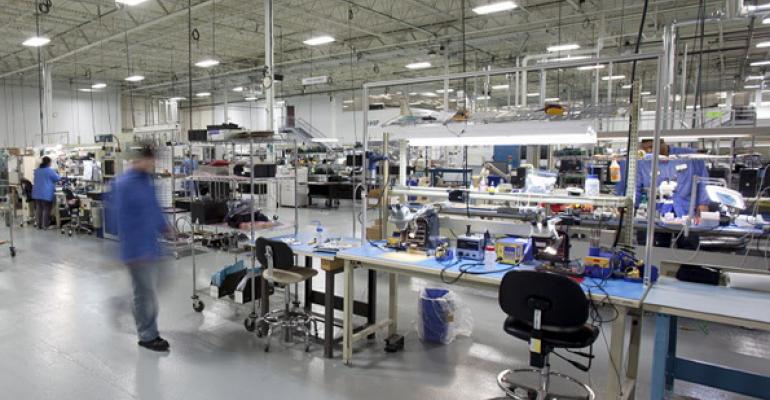Over the last few years, industrial properties have risen through the ranks among banks and other commercial real estate lenders to become financing’s new sweetheart property type. These include core market warehouse and distribution centers, refrigeration/cold storage centers, flex buildings, manufacturing properties and R&D facilities.
Lenders are aggressively targeting these specific property types above others and offering exceptions and concessions that typically haven’t been offered in the past. Many commercial lenders in 2018 have even carved out new policies for pricing discounts on quality industrial properties in core markets. For the right property, those rate discounts can make financing options more attractive than many multifamily offerings, which has long been the preferred property type offering the lowest interest rates. Besides interest rate discounts, many industrial deals are also achieving loan terms with longer 30-year amortization schedules, and underwriting leniency as low as 1.25x debt coverage ratio (DCR), which again historically has been more aligned with multifamily loans. This lower DCR equates to higher loan-to-value (LTV) ratios—more available loan dollars for the borrower and a higher acceptable risk factor for the lender.
The reason behind the demand for industrial loans stems from the recent industrial real estate boom. It’s a story that has already been told, but what’s interesting is how drastically it is affecting commercial real estate financing. Industrial vacancy remains extremely low, especially for quality assets in core and near-core markets. Low availability translates to fewer deals for the taking, and a bigger need to “fill the bucket” for lenders’ targeted industrial quotas. Banks, life companies, CMBS lenders and other mortgage funds need to offer competitive pricing and attractive terms to win their share. The anticipated continuance of rising demand for industrial properties also puts the lender in a lower-risk position compared to lending the same amount on other product types, like office buildings or retail strip centers. The demand is there, and the market is changing in order to find a way to keep up with it.
This industrial boom has been fueled by the rise of e-commerce and the surge in online shopping. Larger online stores like Amazon and Zappos, along with many small, innovative companies, are changing the retail experience. Consumers today are using online resources to shop smarter, more efficiently, and for a longer period of time. A strong economy also means consumer confidence and an uptick in consumer spending. All of this translates to a large and growing need for warehouse and distribution space for these products, and the rule of thumb is that every dollar spent online typically requires three times more space than a walk-in retail store location because of storage and transport.
Additionally, the vacancy rates for industrial properties are the lowest in major cities. There is much less or no availability to build in these markets compared to more suburban or rural areas in the United States. The catch-22 of the situation is that these larger cities and surrounding areas are in the highest demand for newly created industrial fulfillment centers. Consumer goods purchased online need to be delivered to those consumers, and they are all living in tight real estate markets. While the manufacturing and major distribution can take place in tertiary markets, “last-mile” facilities for any finishing touches, delivery and local support are still needed. These buildings are more general purpose and require less square footage or specialization. Many developers are seizing this opportunity, converting non-performing retail, office and special use properties in larger cities into last-mile facilities for these growing companies. This is therefore creating a niche need for commercial bridge financing during the interim conversion for developers, and land financing for speculative investors banking on build-to-suit opportunities for well-located parcels.
Single-tenant properties are still comparatively riskier, so solid tenant financials and a strong borrower signing recourse should be expected for qualification. While most competitive commercial real estate lenders in the market are making provisions for industrial, overall qualification still remains fairly conservative, with rising interest rates and values starting to venture into the cooling-off territory. However, financing overall for quality industrial properties is anticipated to remain aggressive for the near future as we navigate the changing retail environment and the industries it affects.
Colin Dubel is a commercial mortgage advisor and principal of HarborWest Commercial Lending, based in Orange County, Calif. He can be reached at [email protected].

